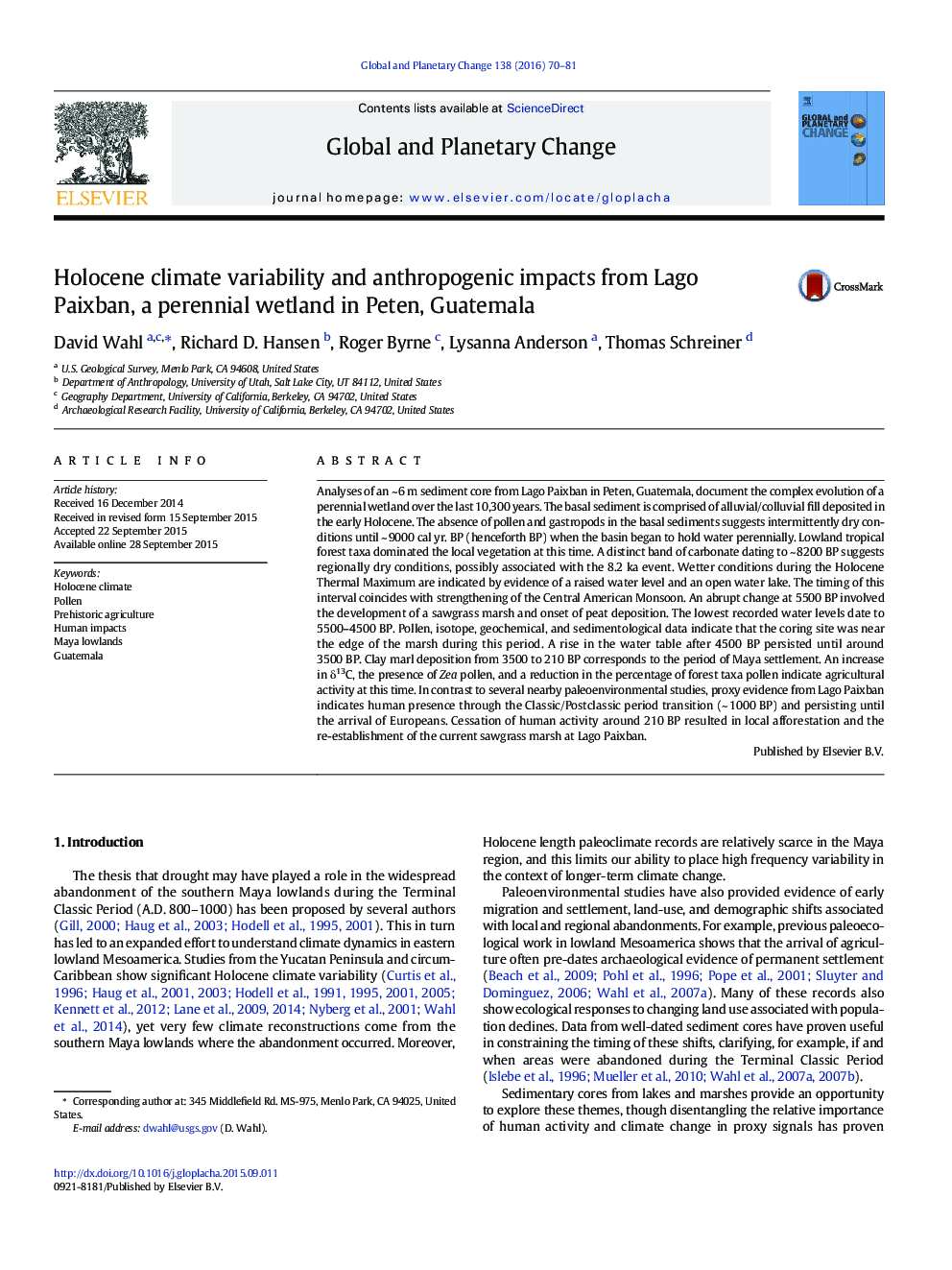| کد مقاله | کد نشریه | سال انتشار | مقاله انگلیسی | نسخه تمام متن |
|---|---|---|---|---|
| 4463341 | 1621644 | 2016 | 12 صفحه PDF | دانلود رایگان |

• We present a 10,300 year environmental reconstruction from northern Peten, Guatemala.
• Maximum moisture in the early to middle Holocene
• Drier conditions set in ~ 5500 cal yr. BP
• Presence of agriculture and human impacts from ~ 3500–210 cal yr. BP
Analyses of an ~ 6 m sediment core from Lago Paixban in Peten, Guatemala, document the complex evolution of a perennial wetland over the last 10,300 years. The basal sediment is comprised of alluvial/colluvial fill deposited in the early Holocene. The absence of pollen and gastropods in the basal sediments suggests intermittently dry conditions until ~ 9000 cal yr. BP (henceforth BP) when the basin began to hold water perennially. Lowland tropical forest taxa dominated the local vegetation at this time. A distinct band of carbonate dating to ~ 8200 BP suggests regionally dry conditions, possibly associated with the 8.2 ka event. Wetter conditions during the Holocene Thermal Maximum are indicated by evidence of a raised water level and an open water lake. The timing of this interval coincides with strengthening of the Central American Monsoon. An abrupt change at 5500 BP involved the development of a sawgrass marsh and onset of peat deposition. The lowest recorded water levels date to 5500–4500 BP. Pollen, isotope, geochemical, and sedimentological data indicate that the coring site was near the edge of the marsh during this period. A rise in the water table after 4500 BP persisted until around 3500 BP. Clay marl deposition from 3500 to 210 BP corresponds to the period of Maya settlement. An increase in δ13C, the presence of Zea pollen, and a reduction in the percentage of forest taxa pollen indicate agricultural activity at this time. In contrast to several nearby paleoenvironmental studies, proxy evidence from Lago Paixban indicates human presence through the Classic/Postclassic period transition (~ 1000 BP) and persisting until the arrival of Europeans. Cessation of human activity around 210 BP resulted in local afforestation and the re-establishment of the current sawgrass marsh at Lago Paixban.
Journal: Global and Planetary Change - Volume 138, March 2016, Pages 70–81